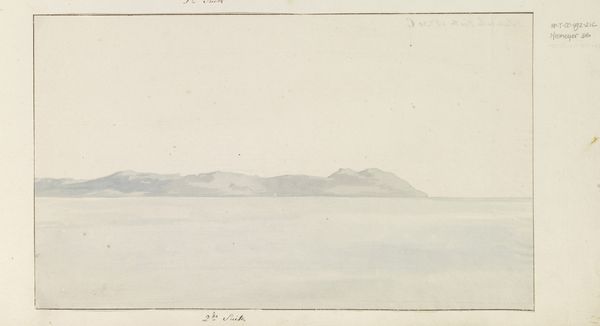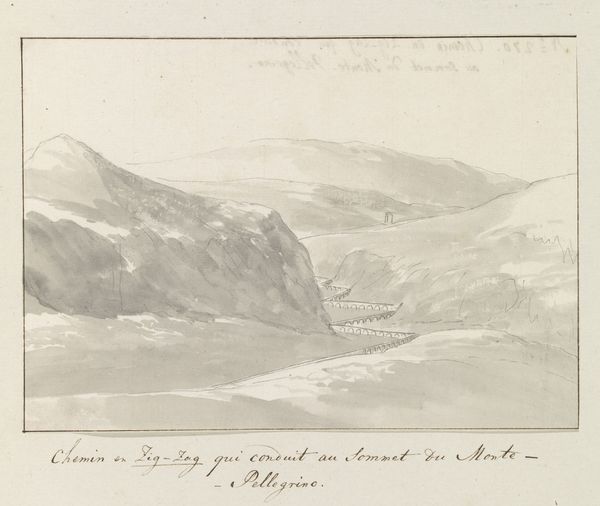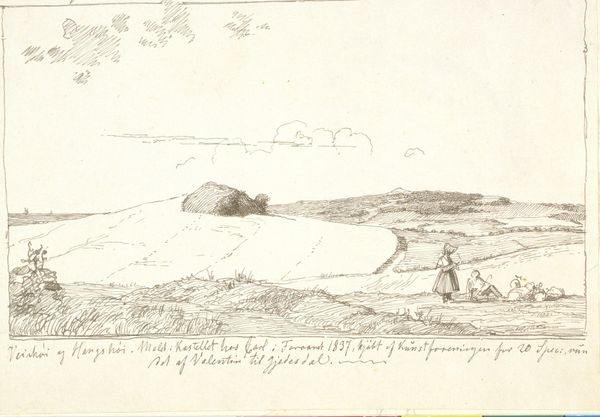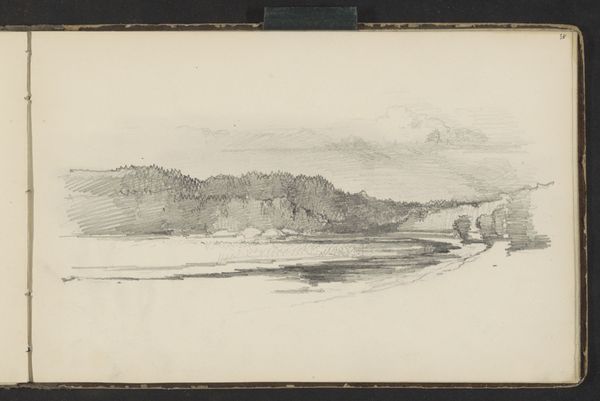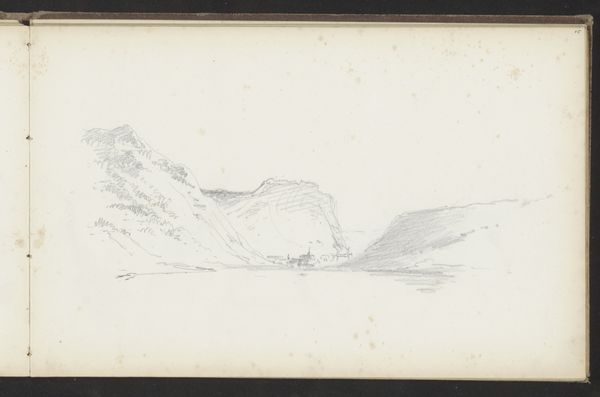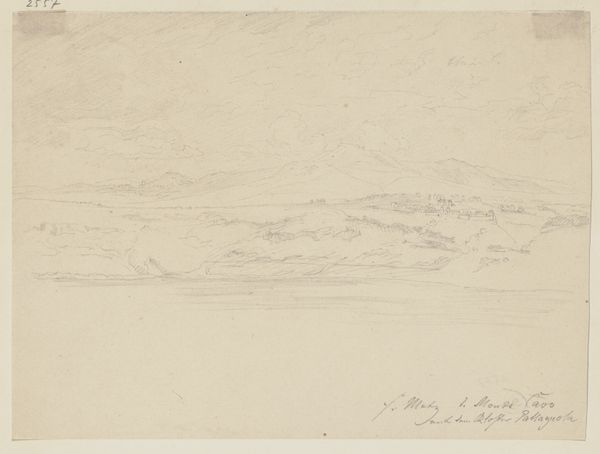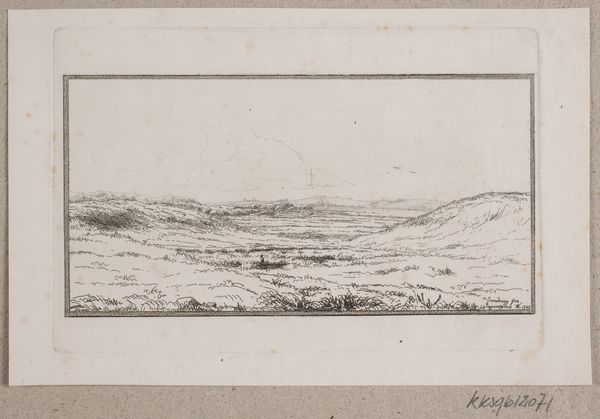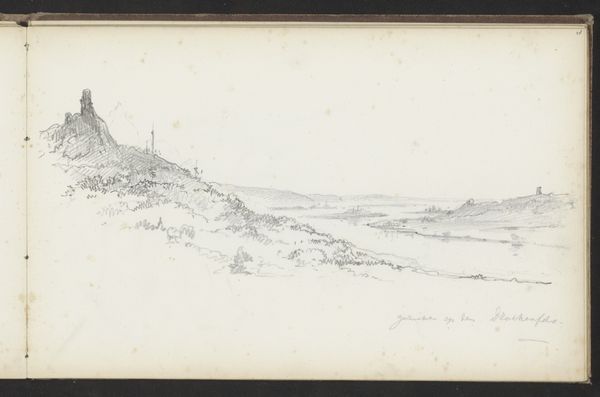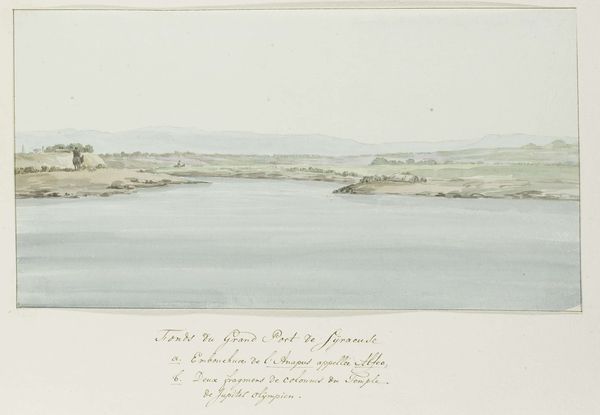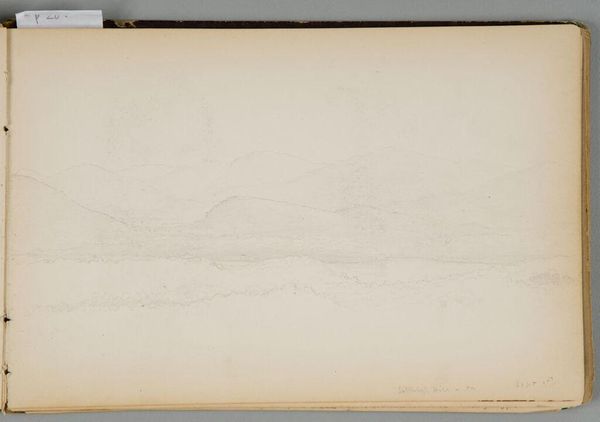
Dimensions: height 161 mm, width 517 mm
Copyright: Rijks Museum: Open Domain
Curator: What strikes me first is how pale everything is; it’s like looking at a memory, faded but clear. Editor: Indeed. This is "View of the Islands Ischia and Procida," rendered in watercolor by Louis Ducros in 1778. It now resides here in the Rijksmuseum. It’s a compelling example of Romanticism, offering a panoramic view that transcends mere topographical accuracy. Curator: There’s a calmness to the scene that's quite potent. I think Ducros is really focusing on how geographical features intersect with feelings of solitude and wonder. Considering the tumultuous backdrop of Europe in the late 18th century, perhaps this reflects a desire for escape. Editor: Agreed, yet that “escape” itself has a context worth investigating. Think about the sourcing of materials—where did Ducros obtain his watercolors and paper? Was the creation of these landscapes accessible to everyone, or only to a privileged class that enjoyed both the means and the leisure to travel and paint? These are relevant points when analyzing art. Curator: That's an important aspect, although I’m more inclined to read the landscape as a space where he's staging a theater for enlightened ideas about the sublimity of nature. It fits squarely within the intellectual currents that shaped how people began to value direct emotional responses to the natural world. Editor: It's an interesting interpretation. I do wonder about labor embedded in the materiality of his art, which inevitably informed and subtly shaped what we see as sublime. Even those thin washes of color denote decisions based on available means. Curator: Absolutely, the production context is undeniable, but Ducros's vision speaks across those barriers. What resonates, I feel, is that fragile, haunting tranquility. Editor: A valuable painting nonetheless, as long as we also acknowledge all these processes together.
Comments
No comments
Be the first to comment and join the conversation on the ultimate creative platform.
